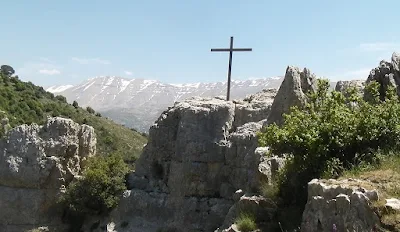25 Interesting Facts About Armenia
- Armenia is a landlocked country in Western Asia. It is located at the border of Eastern Europe and Western Asia and is sometimes considered a Eurasian country.
- More Armenians live abroad than in Armenia. Compared to 3 million Armenians in Armenia, more than 6 million Armenians have settled in other parts of the world. (Source)
- Armenia is one of the oldest wine-producing countries in the world. The oldest winery has been discovered in a cave in Armenia, which is 6,100 years old. (Source)
- The longest non-stop double-track cable car is located in Armenia. Its length is 5,752 m (18,871 ft.). (Source)
- Levon Aronian is a world-renowned Armenian chess player. He was ranked the 4th best chess player in history with a rating of 2830.
- Chess has been a compulsory subject in Armenian schools since 2011. There are mandatory chess lessons for children between ages 6 and 8. (Source)
- Armenia
is known as the first Christian country. It adopted Christianity as its state
religion in 301 AD. Classical Armenian was one of the first languages used to translate the Bible.

Armenia is the world's first Christian country - Armenian Apostolic Church (or Armenian Orthodox Church) is the world’s oldest national church. It was founded in the 1st Century AD.
- Yazidism is the 2nd largest religion in Armenia, with around 50,000 adherents. The world’s largest Yazidi temple is also in Armenia. (Source)
- Armenia is one of the most ancient countries in the world. It was founded in the 6th Century BCE.
- Yerevan is also one of the oldest inhabited cities in Europe. It was founded in 782 BC, around 30 years before Rome. (Source)
- Armenia remained under the control of the Ottoman Empire and the Safavid Dynasty from the 16th to 19th Century.
- The First Republic of Armenia was established after World War 1 in 1918. Later, it became part of the Soviet Union in March 1922.
- The modern country of Armenia came into being on 21st September 1991 after it gained independence from the Soviet Union.
- Ottoman and Turkish forces killed large numbers of Armenians during World War 1. This act is commonly known as the Armenian Genocide. But it is a controversial claim, rejected by Turkey and not supported by many countries.
- Armenia has border disputes with its neighbor country Azerbaijan. Armenia played a major role in the formation of the Nagorno-Karabakh Republic (also known as the Republic of Artsakh) and is one of the few countries that recognize this disputed republic. The majority population of the Nagorno-Karabakh Republic is of Armenian ethnicity. Azerbaijan recaptured a large portion of this republic after the Second Nagorno-Karabakh War in 2020.
- Due to strained relations, Turkey and Azerbaijan have closed their borders with Armenia. Russia is playing a role in securing Armenian borders.
- Armenian capital Yerevan is known as the “pink city.” The reason is the construction of buildings from pink stones of the surrounding landscape. (Source)
- Lake Sevan in Armenia is the largest lake in the Caucasus region. It is also one of the highest lakes in the world. (Source)

Lake sevan is the largest lake in the Caucasus - The discovery place for the oldest (leather) shoe is a cave in Armenia. This shoe is 5,500 years old. (Source)
- Armenia is almost completely mountainous. Around 86% area of Armenia is mountainous. The average elevation of the country is 1,792 m (5,879 ft.), the 10th highest in the world. Its highest point is 4,090 m (13,419 ft.), while the lowest is 390 m (1,280 ft.) above sea level.
- On 7th December 1988, a 6.8 magnitude earthquake in Armenia (then part of the Soviet Union) devastated the entire region. This earthquake resulted in the demise of more than 25,000 people and the destruction of tens of thousands of buildings. The country hasn’t recovered from this earthquake even after 30 years. (Source)
- Lavash is a soft bread from Armenia and is also popular in Iran, Turkey, and the Caucasus region. This bread has been included in UNESCO’s Intangible Cultural Heritage list. (Source)
- Currently, there are 3 UNESCO World Heritage Sites in Armenia. Apart from them, there are four Armenian sites on the tentative list of UNESCO.
- Hundreds of pairs of white storks arrive every year in various villages in Armenia between March and August. Armenia started the Nest Neighbors program for a survey of these white storks. This program received a Whitley Award, a top conservation award in the UK, in 2007. (Source)



Comments
Post a Comment